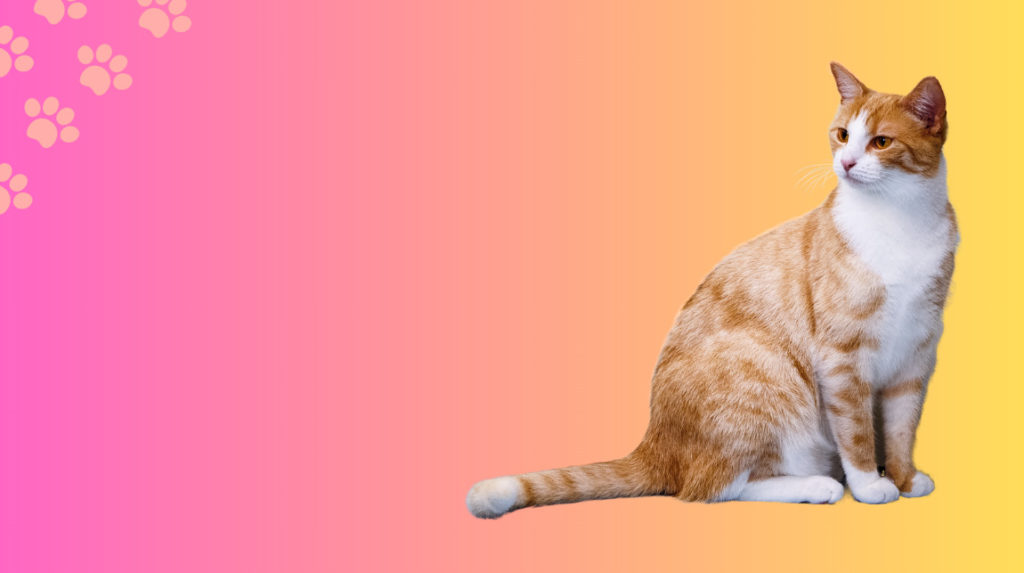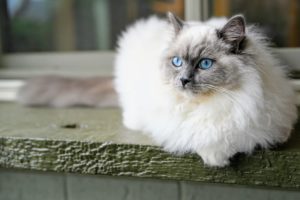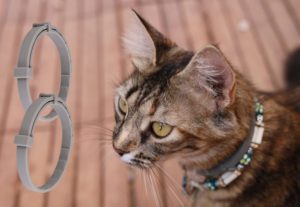Short-haired cats are often considered low-maintenance when it comes to grooming. However, that doesn’t mean they don’t need any grooming at all. In fact, grooming your short-haired cat regularly can help prevent many health problems, improve their appearance, and strengthen your bond.
The Basic Grooming Needs of Short-Haired Cats
Short-haired cats have specific grooming needs that should be addressed regularly. While they may not require extensive brushing, attention to their coat, nails, ears, and oral hygiene is necessary.
Cat grooming mitts are a great way to groom your short-haired cat without causing them any discomfort or anxiety. They can help to reduce shedding, improve coat health, and enhance your bond with your cat.
The basic grooming needs of short-haired cats include:
| Grooming Need | Frequency | Purpose |
|---|---|---|
| Brushing | Once or twice a week | To remove loose hair, dirt, and debris from the coat |
| Nail trimming | Every two to four weeks | To prevent overgrowth, splitting, or ingrown nails |
| Ear cleaning | Once a month or as needed | To remove wax buildup, dirt, or debris from the ears |
| Teeth brushing | Daily or as often as possible | To prevent plaque, tartar, or dental disease |
By following these grooming guidelines, you can keep your short-haired cat’s coat and skin healthy and clean.
Recommended Tools and Supplies for Effective Grooming
To groom your short-haired cat effectively, having the right tools and supplies is crucial. This section discusses the recommended grooming tools, such as brushes, combs, nail clippers, and ear cleaning solutions. Additionally, it offers guidance on choosing suitable products for your cat’s specific needs.
The recommended tools and supplies for effective grooming are:
| Tool/Supply | Description | How to Choose |
|---|---|---|
| Brush | A tool with bristles that removes loose hair and dirt from the coat | Choose a brush that has soft and flexible bristles that won’t scratch or irritate your cat’s skin. You can also use a cat grooming mitt that has rubber or silicone tips that massage and remove hair from your cat’s coat. |
| Comb | A tool with teeth that detangles and smooths the coat | Choose a comb that has fine teeth that can glide through your cat’s fur without pulling or snagging. You can also use a flea comb that has very fine teeth that can remove fleas, eggs, or debris from your cat’s coat. |
| Nail clipper | A tool that cuts the nails to prevent overgrowth or injury | Choose a nail clipper that is designed for cats and has a sharp and curved blade that can cut the nails cleanly and safely. You can also use a nail file that can smooth the edges of the nails after clipping. |
| Ear cleaner | A solution that cleans and disinfects the ears | Choose an ear cleaner that is gentle and safe for cats and has natural ingredients that can dissolve wax, dirt, or debris from the ears. You can also use a cotton ball or a soft cloth that can wipe the ears gently after applying the ear cleaner. |
By using these tools and supplies, you can groom your short-haired cat effectively and comfortably.
Techniques for Minimizing Shedding and Removing Loose Hair
Although short-haired cats shed less than their long-haired counterparts, they still require techniques to minimize shedding and remove loose hair. The techniques for minimizing shedding and removing loose hair are:
Regular brushing
Brushing your short-haired cat once or twice a week can help remove loose hair, dirt, and debris from their coat. This can reduce the amount of hair that they shed around the house or ingest while grooming themselves. Brushing can also stimulate blood circulation, distribute natural oils, and massage your cat’s skin and muscles.
Types of brushes
The type of brush you use can affect how well you remove loose hair from your cat’s coat. Rubber or silicone tips can create a static charge that attracts the hair to the tips, making it easy to collect and dispose of. You can also use a slicker brush that has fine metal bristles that can reach deeper into your cat’s fur and remove more hair.
Tips for efficient hair removal
To remove loose hair efficiently, you should use the brush in the same direction as your cat’s fur growth, not against it. This will help avoid tangles, mats, or discomfort for your cat. You should also use circular motions or gentle taps with the brush to massage your cat’s skin and muscles. You should clean the brush regularly by peeling off the hair from the tips or rinsing it with water.
By following these techniques, you can minimize shedding and remove loose hair from your short-haired cat’s coat.
Creating Comfortable and Enjoyable Grooming Sessions
Grooming can sometimes be stressful for cats. In this section, practical tips are provided to create a comfortable and enjoyable grooming environment for your short-haired companion. Techniques such as positive reinforcement, gradual introduction to grooming, and the use of calming aids are covered.
The tips for creating comfortable and enjoyable grooming sessions are:
Positive reinforcement
Positive reinforcement is a technique that rewards your cat for desirable behavior, such as allowing you to groom them. You can use treats, praise, or toys to reward your cat during or after grooming sessions. This can help your cat associate grooming with something positive and enjoyable.
Gradual introduction to grooming
Gradual introduction to grooming is a technique that exposes your cat to grooming slowly and gently. You can start by letting your cat sniff and touch the grooming tools, then reward them with treats or praise. You can then move on to gently stroking their fur with the tools, then gradually increase the pressure and duration of the strokes. You can also try grooming your cat when they are relaxed or sleepy, such as after a meal or a nap.
Calming aids
Calming aids are products that help reduce stress and anxiety in cats. They can include pheromone sprays or diffusers, herbal supplements, or calming collars. You can use calming aids before or during grooming sessions to help your cat feel more relaxed and comfortable.
Special Considerations and Precautions for Grooming Short-Haired Cats
While grooming short-haired cats may seem straightforward, there are still specific considerations and precautions to keep in mind. Sensitive areas, such as the abdomen and tail, require careful handling. This section provides guidance on maintaining proper hygiene without causing discomfort.
The special considerations and precautions for grooming short-haired cats are:
Sensitive areas
Some areas of your cat’s body may be more sensitive than others, such as the abdomen, tail, ears, eyes, and mouth. You should be gentle and cautious when grooming these areas, as they may cause your cat to react negatively or defensively. You should also avoid grooming these areas if they are injured or infected, as this may worsen the condition or cause pain.
Hygiene
Hygiene is an important aspect of grooming, as it helps prevent infections, parasites, or diseases. You should wash your hands before and after grooming your cat, as well as sanitize the grooming tools and supplies regularly. You should also check your cat’s coat and skin for any signs of fleas, ticks, mites, or other pests, and treat them accordingly. You should also trim your cat’s nails to prevent them from scratching themselves or others.
Discomfort
Discomfort is a common reason why cats may resist or dislike grooming. You should try to make grooming as comfortable and enjoyable as possible for your cat. You should also monitor your cat’s body language and vocalizations during grooming sessions, and stop if they show signs of stress, fear, or pain.
You should also consult your veterinarian if your cat has any medical conditions that may affect their grooming needs or tolerance.
By following these considerations and precautions, you can groom your short-haired cat safely and comfortably.
Recognizing and Addressing Skin and Coat Issues
Grooming helps prevent and address potential skin and coat issues. Common signs of skin problems in short-haired cats, such as dryness or excessive oiliness, are outlined. Additionally, tips on how grooming can contribute to a healthy coat are provided.
The signs of skin and coat issues and how to address them are:
Dryness
Dryness is a condition where your cat’s skin lacks moisture and becomes flaky, itchy, or irritated. It can be caused by factors such as low humidity, dehydration, poor nutrition, or allergies. To address dryness, you should groom your cat regularly with a moisturizing shampoo that contains natural ingredients such as aloe vera or oatmeal. You should also provide your cat with fresh water at all times, and feed them a balanced diet that contains essential fatty acids.
Excessive oiliness
Excessive oiliness is a condition where your cat’s skin produces too much sebum, which is a natural oil that lubricates the skin and hair. It can result in a greasy or dull coat, clogged pores, or acne. It can be caused by factors such as hormonal imbalance, stress, or genetics. To address excessive oiliness, you should groom your cat regularly with a mild shampoo that contains ingredients such as tea tree oil or witch hazel. You should also avoid over-bathing your cat, as this may strip their natural oils and make them produce more sebum.
Healthy coat
A healthy coat is a sign of a healthy cat. It is shiny, smooth, and free of mats, tangles, dirt, or debris. It also reflects your cat’s personality and mood.
To maintain a healthy coat, you should groom your cat regularly with the appropriate tools and supplies. You should also check your cat’s coat and skin for any abnormalities, such as lumps, bumps, wounds, or parasites, and consult your veterinarian if you notice any.
By recognizing and addressing skin and coat issues, you can keep your short-haired cat’s coat and skin healthy and beautiful.
Beneficial Grooming Products for Short-Haired Cats
This section recommends grooming products and shampoos that are beneficial for short-haired cats. These products nourish the skin, promote a healthy coat, and address concerns such as dandruff or allergies.
The beneficial grooming products for short-haired cats are:
| Product | Description | How to Use |
|---|---|---|
| Cat shampoo | A product that cleans and conditions the coat and skin | Choose a cat shampoo that is gentle and safe for cats and has natural ingredients that can moisturize, soothe, or deodorize the coat and skin. You can use a cat shampoo once a month or as needed, depending on your cat’s coat condition and activity level. To use a cat shampoo, wet your cat’s coat with warm water, apply a small amount of shampoo, massage it into the coat and skin, then rinse thoroughly with water. |
| Cat conditioner | A product that hydrates and softens the coat and skin | Choose a cat conditioner that is gentle and safe for cats and has natural ingredients that can nourish, protect, or detangle the coat and skin. You can use a cat conditioner after shampooing your cat or as a leave-in product. To use a cat conditioner, apply a small amount of conditioner to your cat’s coat, comb it through with your fingers or a brush, then rinse lightly with water or leave it in. |
| Cat wipes | A product that cleans and freshens the coat and skin | Choose a cat wipe that is gentle and safe for cats and has natural ingredients that can remove dirt, dust, or odor from the coat and skin. You can use a cat wipe daily or as needed, especially if your cat is prone to getting dirty or smelly. To use a cat wipe, gently wipe your cat’s coat and skin with the wipe, avoiding the eyes, ears, mouth, and genitals. |
By using these products, you can enhance your short-haired cat’s grooming experience and results.
The Benefits of Regular Grooming for Overall Well-Being
Regular grooming sessions offer numerous benefits beyond maintaining a clean and shiny coat. Grooming contributes to overall well-being, including bonding with your cat, early detection of health issues, and reducing the risk of hairballs and skin irritations.
The benefits of regular grooming for overall well-being are:
Bonding
Bonding is the process of forming a close relationship with your cat based on trust and affection. Grooming can help you bond with your cat by providing physical contact, positive reinforcement, and quality time together. Grooming can also help your cat bond with you by mimicking their natural behavior of grooming themselves or each other. Bonding can improve your cat’s emotional health and happiness.
Early detection
Early detection is the process of identifying potential health problems before they become serious or life-threatening. Grooming can help you detect health issues early by allowing you to examine your cat’s coat and skin for any abnormalities, such as lumps, bumps, wounds, or parasites. Grooming can also help you monitor your cat’s weight, appetite, energy level, and behavior. Early detection can improve your cat’s physical health and survival rate.
Prevention
Prevention is the process of avoiding or reducing the occurrence of undesirable outcomes or complications. Grooming can help you prevent problems such as hairballs and skin irritations by removing loose hair, dirt, and debris from your cat’s coat. Hairballs are clumps of hair that accumulate in your cat’s stomach or intestines after they ingest them while grooming themselves
Hairballs can cause vomiting, constipation, or obstruction in your cat’s digestive system. Skin irritations are inflammation or infection of the skin that can cause itching, scratching, or licking in your cat. Grooming can also help you prevent problems such as fleas, ticks, mites, or other pests by keeping your cat’s coat and skin clean and healthy. Prevention can improve your cat’s comfort and quality of life.
By understanding these benefits, you can appreciate the importance of regular grooming for your short-haired cat’s overall well-being.
By following these methods, you can handle mats and tangles in your short-haired cat’s coat with care.
Handling Mats and Tangles in Short-Haired Cats
Although short-haired cats are less prone to matting and tangles, they can still occur. This section provides tips and techniques for handling mats and tangles with care to ensure your feline companion’s comfort and health.
The methods for handling mats and tangles in short-haired cats are:
Prevention is the best way to avoid mats and tangles in your short-haired cat’s coat. Mats and tangles can be prevented by brushing your cat regularly with the appropriate tools.
You can also prevent mats and tangles by keeping your cat’s coat and skin moisturized with a conditioner or a spray. You should also avoid exposing your cat to factors that can cause matting or tangling, such as humidity, dirt, or burrs.
Detection is the process of finding mats and tangles in your short-haired cat’s coat before they become worse or cause discomfort. You can detect mats and tangles by running your fingers or a comb through your cat’s fur, especially in areas that are prone to matting or tangling, such as the armpits, chest, belly, or tail. You should also check your cat’s coat and skin for any signs of pain, inflammation, or infection, such as redness, swelling, or pus.
Removal is the process of getting rid of mats and tangles in your short-haired cat’s coat without causing harm or distress. You can remove mats and tangles by using a comb or a mat splitter that has sharp blades that can cut through the knots.
You should be gentle and cautious when removing mats and tangles, as they may pull or tug on your cat’s skin or hair. Avoid using scissors or clippers to remove mats and tangles, as they may injure your cat’s skin or damage their coat.
By following these methods, you can handle mats and tangles in your short-haired cat’s coat with care.
Professional Grooming Services: When and Why to Consider Them
While grooming at home is generally sufficient, professional grooming services may be beneficial in certain situations. This section discusses when and why you might consider seeking the assistance of a professional groomer.
The situations when professional grooming services may be needed are:
Special occasions
Special occasions are events that require your cat to look their best, such as a show, a photo shoot, or a visit to a friend’s house. Professional groomers can provide services such as bathing, trimming, styling, or nail painting that can enhance your cat’s appearance and confidence.
Medical conditions
Medical conditions are health problems that affect your cat’s grooming needs or tolerance, such as arthritis, obesity, allergies, or wounds. Professional groomers can provide services such as medicated baths, therapeutic massages, or wound care that can help your cat heal and recover.
Behavioral issues
Behavioral issues are problems that make your cat resist or dislike grooming, such as fear, anxiety, or aggression. Professional groomers can provide services such as sedation, restraint, or desensitization that can help your cat cope and relax.
The reasons why professional grooming services may be beneficial are:
Expertise: Expertise is the knowledge and skill that professional groomers have in handling different types of cats and coats. Professional groomers can provide services that are tailored to your cat’s specific needs and preferences. They can also advise you on the best grooming practices and products for your cat.
Convenience: Convenience is the ease and comfort that professional grooming services offer to you and your cat. Professional groomers can provide services at your home, at their salon, or at a mobile unit. They can also provide services at a time and frequency that suits your schedule and budget.
Safety: Safety is the protection and security that professional grooming services provide to your cat. Professional groomers can provide services that are safe and hygienic, using tools and supplies that are clean and sterilized. They can also provide services that are humane and ethical, using techniques that are gentle and respectful.
By considering these situations and reasons, you can decide whether professional grooming services are right for your short-haired cat.
Frequently Asked Questions (FAQ)
You should groom your short-haired cat once or twice a week, depending on their coat condition and activity level. You should also groom them more often during shedding seasons, such as spring and fall.
By brushing them regularly with the appropriate tools. Reduce shedding by keeping their coat and skin moisturized with a conditioner or a spray.
Bathe your short-haired cat once a month or as needed, depending on their coat condition and activity level. Use a cat shampoo that is gentle and safe for cats and has natural ingredients that can moisturize, soothe, or deodorize the coat and skin. You should also use warm water, a soft towel, and a hair dryer on a low setting to bathe your cat. You should avoid getting water or shampoo in your cat’s eyes, ears, mouth, or genitals.
Clean your short-haired cat’s ears once a month or as needed, depending on their ear condition and activity level. Use an ear cleaner that is gentle and safe for cats and has natural ingredients that can dissolve wax, dirt, or debris from the ears. Use a cotton ball or a soft cloth that can wipe the ears gently after applying the ear cleaner. You should avoid inserting anything into your cat’s ear canal, such as cotton swabs or tweezers.
Conclusion
Grooming your short-haired cat is an essential aspect of their care routine. By following the recommended tips, utilizing the right tools and supplies, and understanding the unique needs of your feline friend, you can ensure their coat remains healthy, shiny, and mat-free.
We hope this guide has helped you learn how to groom your short-haired cat properly and effectively
With a passion for cats and years of experience in cat care and grooming, I have gained valuable insights and expertise that I want to share with other cat lovers. I believe that every cat deserves the best care possible, and through this platform, I aim to empower cat owners like you to provide the utmost love and care for your feline companions.



